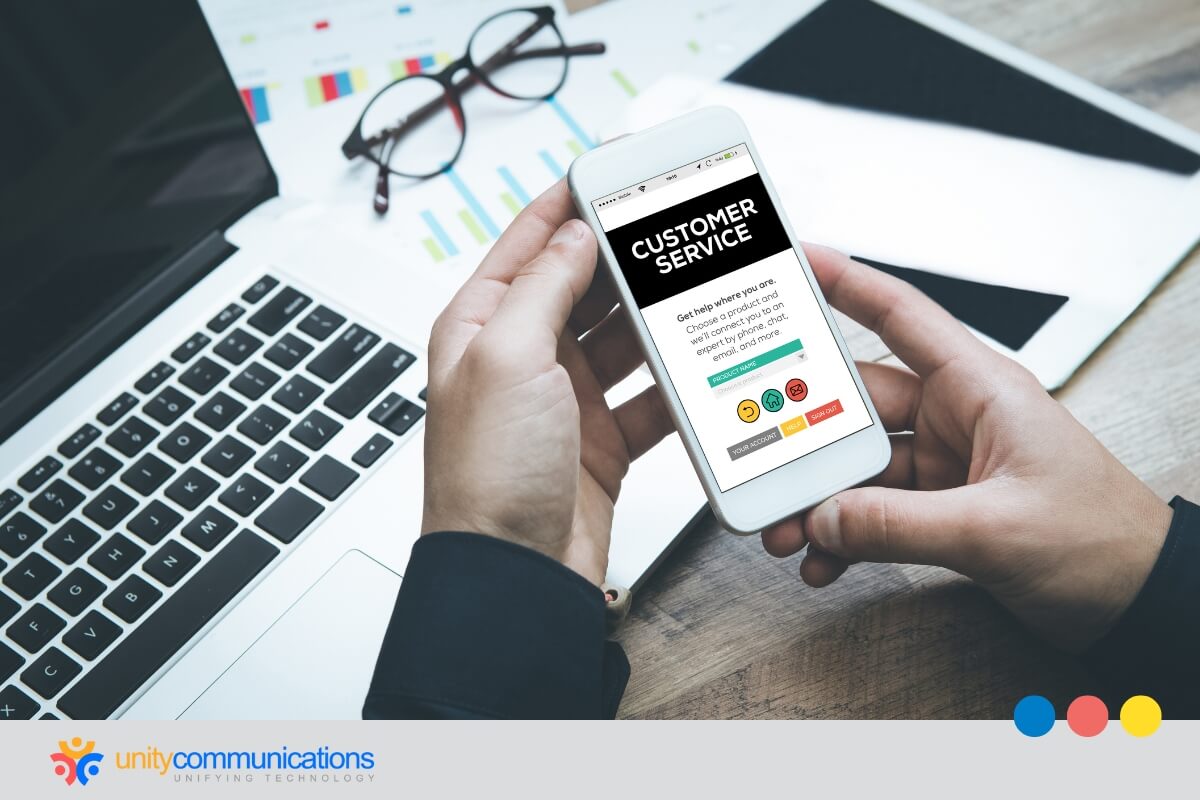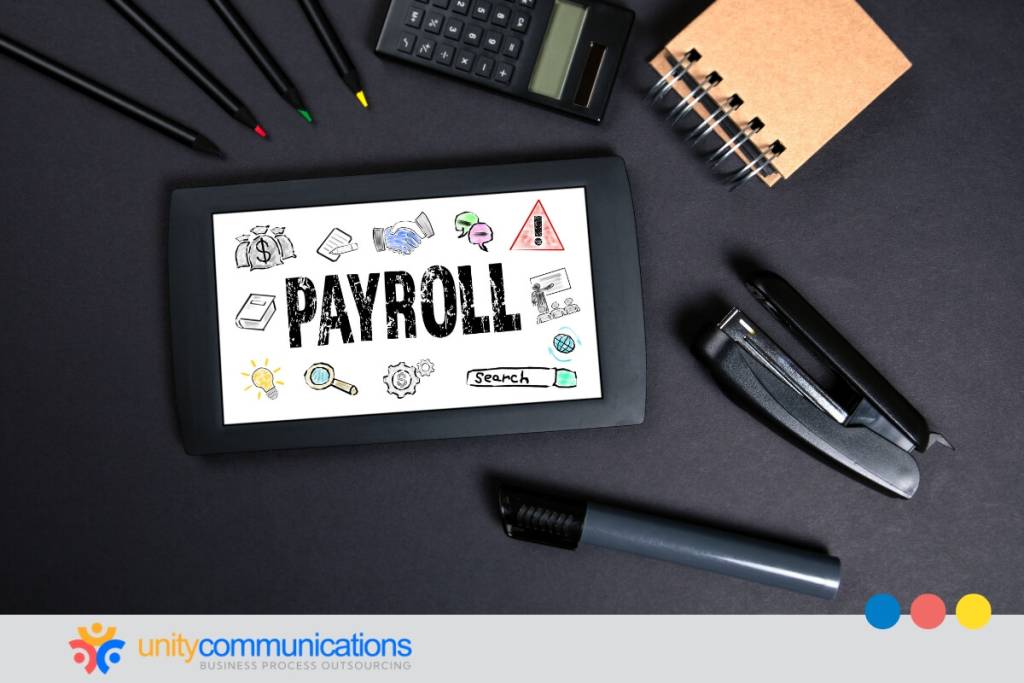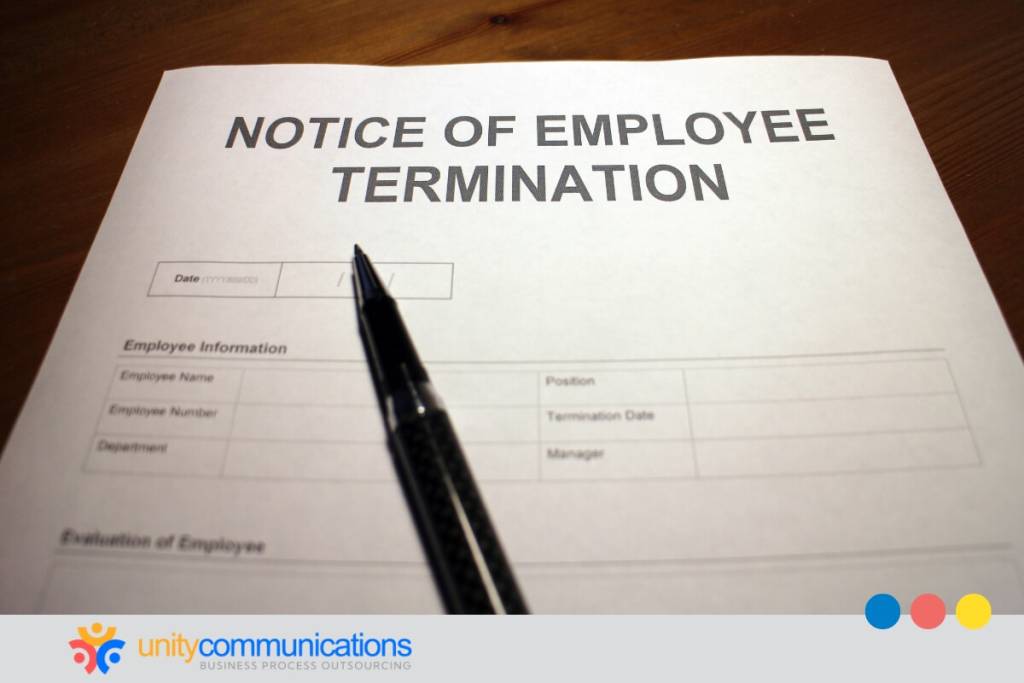Table of Contents
Many businesses struggle to provide positive responses to customer problems. Customer service mistakes are detrimental and can cost you significant money.
The right response to customer requests and effective outsourced technical support help de-escalate the situation.
Here are 13 customer service scenarios and tips on handling them.
Ways To Respond to Every Customer Service Scenario

How do you say no to a customer? What do you say if you don’t know the answer to a customer’s inquiry?
Here are some tips on how to respond to certain customer requests.
1. A Request for a Feature
Clients are a good source of ideas for product innovation and company growth. Hence, customer requests for a feature should be among your priorities. Here are what you can do in certain feature-request scenarios.
Customer service request:
| Hi! I bought your product last month, and it works well. But it would be better if it had a [new feature]. It might be helpful for a lot of customers. Could you include it in the next update? |
That might be problematic because implementing a new feature update takes weeks or months. Tickets such as feature requests can make new agents nervous. However, consider whether management plans to implement it.
The first rule here is not to make false promises.
Customer service response if the answer is yes:
| Hello, [First Name]! Thank you for your feedback. We’re really happy you’ve enjoyed the product. Your idea sounds great! Would it be okay to share more details regarding the [new feature] with our development team? It would help prioritize their resources so that we could release them faster. I’ll let you know as soon as the [new feature] is ready, and you’ll be one of the first to use it. |
Take note of the feature requests that customers make. You might need to outsource data entry for this to manage all requests.
Customer service response if the answer is no:
| Hello, [First Name]! We appreciate you sharing your idea. It’s fascinating! Many of our clients agree with you. The feature is already in our backlog, and I will include your vote to push it further. Due to limited resources, we can’t implement the [new feature] on the next update. I’ll let you know when we’re ready to release the [new feature]. In the meantime, consider [an alternative solution offer]. Do you think you need my help with it? |
Things to remember:
- Thank the prospect or client for the feedback.
- Tell them when you are going to add the feature.
- Explain why you won’t be adding the feature.
- Offer another solution.
2. A Product Is Out of Stock
Another customer service scenario is when a caller asks about a particular product. Upon granting the request and closing the deal, you realize it is out of stock. Save the client’s interest by stating when the item will be available. Take note of the case below.
Customer service request:
| Hi, I saw this [product] in one of your ads. How can I place an order? |
Example of a poor customer service reply:
| It’s currently out of stock. You can purchase it in three weeks. |
Saying this might push your prospect to switch to your competitor’s site where a similar item is available.
Example of a good customer service reply:
| Hello! The product you’re interested in will be in stock in three weeks. I can place an order first in line on your behalf so that you can get it as soon as it becomes available. |
Do you notice the difference? Saying this instead won’t crush the customer’s expectations; it merely postpones their realization. Plus, you’ll be adding a new customer to your list.
The combination of VIP client treatment and positive connotation does the job.
Things to remember:
- Refrain from using negative language such as “We can’t do that…” and “I can’t…”
- Tell your back-office outsourcing service provider to focus on the positive, provide a solution, and inform the prospect when the item will be available.
3. Transferring a Caller
Some customer service scenarios force you to transfer a caller to another agent or a manager. In this case, you shouldn’t leave the client with a vague response. You must provide them with the transfer details and prevent them from getting frustrated.
Customer service request:
| Hi, I’m experiencing a checkout problem. My card is not part of your payment options. How can I pay for the item? |
Example of a poor customer service reply:
| Hello, could you hold for one moment? I’ll transfer you to [an expert]. |
This reply usually means that the agent understands the problem and wants to save the customer’s time by transferring them to someone who knows the issue better. However, callers expect an immediate answer. A phrase such as this poses no certainty that the next agent knows the solution to their problem.
Example of a good customer service reply:
| Hello, [First Name]! I understand you’re encountering a problem. Let us resolve it for you. Would you mind if I transferred you to a better-suited specialist to help you with the issue? It won’t take long. |
That sounds better, doesn’t it? The customer is satisfied. The agent is safe. Mission complete.
Things to remember:
- Focus on the caller. Use more ‘you’ statements and fewer ‘we’ or ‘I’ statements.
- Explain why you need to transfer the caller.
- Reassure them that the next expert will know the answer to their question.
4. Questions You Don’t Know the Answer To
You must never reply with, “I don’t know,” no matter the customer service scenario. Clients come to you expecting answers to their questions. They will be disappointed and may even transfer to a competitor if you fail to provide a clear solution.
Customer service request:
| Hi, I like your product and am looking to buy 30 items. Do you offer discounts for buyers who purchase in large quantities? |
Example of a poor customer service reply:
| Hello, unfortunately, I can’t provide you with an answer right now. |
This answer does not address the customer’s concern or let them know if or when you’ll reach out to them. Adding a simple “Could I call you back” and other details can significantly change the tone.
Example of a good customer service reply:
| Hi, [First Name}! Thank you for choosing the [product]. Would you mind giving me a sec to clarify this for you? I’ll reach out as soon as I get a clearer answer. And while I talk to the manager, feel free to browse our items on sale. Here’s the link. |
Saying this shows you care about and understand the caller’s question. It also assures them that you’ll do whatever it takes to find the answer.
Remember that 93% of shoppers are likely to repeat buying if the customer service is excellent. Never leave a customer confused or with a vague answer because they might look at your competitors instead.
Things to remember:
- Assure customers that you will get in touch with an answer.
- Before letting customers go, provide them with an alternative solution.
5. Asking About Your Competitive Advantage
Many companies don’t know their competitive advantage. So most agents reply with empty phrases such as, “We have a great team.”
Only proof works in such customer service scenarios.
Customer service request:
| Hello, I have been a [specific product] user for years, but recently it has become too expensive for me. So I’m currently looking for an alternative. Could you explain to me, please, what makes your product different from the others? |
When management fails to provide this information for the customer service team, the agents might draw vague or sometimes wrong conclusions. They might respond with clichéd answers.
Example of a poor customer service reply:
| Hi! The [competitor’s product] is costly. We notice previous clients have already complained about this. [Your product] is more affordable. By choosing [your product], you get more while paying less. Would you like to set up a demo to learn more? |
This answer is not terrible, but it can be better. Instead of merely comparing prices, explain the difference between the items. You should know your competitor’s products and weak points to do this.
Example of a good customer service reply:
| Hi, [First Name]! The [competitor’s product] might be a good option, but [your product] tops it by [price, feature 1, feature 2, and so on]. You can check out a detailed comparison to find out more: [link]. If you’re on the fence, we can set a demo so that you can see the product in action. |
Things to remember:
- Respect your competitors. Refrain from saying anything negative about them; instead, discuss the choice of your prospect. Keep the comparison objective.
- Write a comprehensive comparison. Choose the main products and state the difference. Highlight what makes your product stand out.
- Provide evidence such as numbers and facts. Instead of saying your product is cheaper, talk about its functionality, features, and benefits despite the price.
- Give your back-office outsourcing provider a detailed article comparing your product against the competitors.
- Make sure everyone on your team knows your product advantages and the analysis results.
6. When You Need To Say NO
Some customer service scenarios involve a customer or an affiliate asking for a service your company does not offer. In such cases, it’s usually awkward to refuse the request, but there’s a good way to do so.
Customer service request:
Hi, I’m [First Name], one of your affiliates. I’m interested in launching a Christmas email campaign about your product. I already wrote the content, but I want the newsletter to have special CSS animations and illustrations. Could you please do it for me? Kindly find the requirements in the attachment below. If you encounter any problems, please let me know. We can set a video call so that I can discuss the details step by step. |
However, your company does not offer such a service. The affiliate probably spent a long time crafting the idea and would be very disappointed to hear you say no.
Example of a poor customer service reply:
| Hello! Thanks for reaching out. Your idea sounds brilliant, but we currently don’t offer such a service. |
Example of a good customer service reply:
Hello, [First Name]! I appreciate you taking the time to share your wonderful idea. Due to the lack of resources, we can’t offer such a service. You can check the affiliate agreement document for more details: [link]. Anyway, we have:
I hope this helps you. I’ll let you know should anything change. |
While this response is not what the affiliate wants to receive, you can smooth problems over by providing an alternative solution.
Things to remember:
- Show the customer empathy.
- Don’t give them false hope and promises.
- Ask if something is not clear.
- Explain why you have to decline.
7. The Customer Is Asking You To Violate a Company’s Rule
This is another customer service scenario that requires refusal.
Some customers have gotten used to receiving special treatment. Fulfilling a small request is one thing, but violating company rules is another.
Customer service request:
| Hi, I noticed that the trial version of your product doesn’t have the features I need to make a buying decision. I’m ready to purchase, but I must first check on a few things. Would it be possible to access the full functionality during the demo period? |
The deal looks promising; however, the rules are clear about the trial period features. No exceptions.
Example of a poor customer service reply:
| Hello! We are happy to know that you enjoy using the product. May I know your email so that I can send log-in information? |
This reply might sound good, except it violates the company rules.
Example of a good customer service reply:
| Hello, [First Name]! Thank you for your choice. It’s our pleasure to know that you like the product. As much as we love fulfilling our client’s requests, I’m afraid yours goes beyond our company rules. If the question is about the feature, we can set a demo, and we’ll be happy to show the product’s full potential. Meanwhile, you can browse through our special offers: [link]. |
Even though you had to decline, you offered the customer an alternative solution.
Things to remember:
- Explain the reason.
- Provide another solution.
- Ensure everyone on the team knows your company policies.
You can control this customer service scenario. But what if the customer has already breached one of your policies?
8. A Breach of the Product’s Terms of Use
The client sometimes makes a mistake or deliberately breaches a product’s terms of use in some customer service scenarios.
For example, a customer buys a course. The terms are clear that users can’t share their log-in data or content with anyone.
However, you notice multiple attempts to log on to the same account from different devices, locations, and IP addresses. Because the user can’t be in multiple countries simultaneously, the account is blocked.
Customer service request:
| Hi, I bought a course from your company about two months ago. But the log-in credentials you gave me no longer work. Could you advise on this? |
Example of a poor customer service reply:
| Hello! It was blocked to prevent data loss. |
The response is understandable and clear; however, there is no attempt to help and no sign of empathy. It might be a mistake and not a deliberate violation. Keep the presumption of innocence in mind.
Example of a good customer service reply:
Hi, [First Name]! We noticed some suspicious attempts to log on to your account from multiple devices at the same time while registered with a single device plan. It was blocked to prevent any data loss. Did you happen to share the log-in information with others? Kindly let us know. It can lead to data loss if it repeats. |
This reply sounds better, doesn’t it? It explains the situation and potential consequences in detail. Notice that there are no threats.
It also pays to keep a record of the customer’s information. You can outsource data entry services for this.
Things to remember:
- Determine the client’s needs and try to satisfy them.
- Don’t blame the customer without proof.
9. It Was the Company’s Fault
Your company might be in the wrong in some customer service scenarios. Suppose your server crashes, and your services are unavailable for half a day.
Case:
| Your server crashes and will definitely trouble many customers. |
You must notify clients about the issue and own up to your mistakes.
Example of a poor customer service reply:
| Poor customer service will be not admitting you’re in the wrong and leaving customers hanging, hoping they won’t notice. |
Example of a good customer service reply:
Dear Customer, One of our servers crashed this Monday. It’s now running, but we understand the troubles it might have caused. Please know that we are sorry for such a poor experience. It’s important for [Company] to run smoothly. We have learned the lesson, and are going to improve [Product] to prevent such situations from happening again. |
Things to remember:
- Take responsibility for the problem.
- Apologize to the customers for the disturbance.
- Explain your plan to do better.
- Let them know the schedule of the plan implementation.
10. The Price of a Product Is Too High
You might encounter customer service scenarios where the client disagrees with your pricing and asks for a discount. Good customer service can convince prospects to buy.
Customer service request:
| Hi! I think your product is amazing, but the price is too expensive for me. I’m ready to place an order, but the full plan is too pricey. I was wondering if you offer discounts for new customers or if you will be updating your pricing. |
In cases like these, it pays to explain the product’s value and the benefits it can bring to customers. Inform the prospect about the product advantages and elements of the selected plan.
Example of a poor customer service reply:
| Hi! We’re happy to know you like the product. The pricing was already updated last month, so we will not be changing it in the near future. But you can check out our upcoming Halloween sale if you want to get it for less: [link]. |
The solution in this reply seems fair: wait for the sale to get a discount. However, it does not address the reason for the question—a lack of understanding of the product’s value.
Example of a good customer service reply:
Hi, [First Name]! We are glad you enjoy the product. Our team put a lot of effort into delivering security, sustainable workflow, and various features. Buying [Product], you get not just [features] but [product advantages 1, 2, 3]. Our designers, developers, and support managers work daily to [primary task the product does]. If the price seems too steep, you can check out our upcoming Halloween sale [link] to get the item for less. Is this what you’re looking for? |
This reply explains why the product is worth its price. It also marks the beginning of the client’s knowing the product’s value and advantage.
Things to remember:
- Explain the reason behind the pricing.
- Focus on the product’s advantages and benefits.
- Offer an alternative solution.
11. A Request for a Refund
Buyers ask for their money back in some customer service scenarios. It’s usually an easy task, except when you can’t provide a refund.
Customer service request:
| There is something wrong with your product. It has a bug that brought my setting to default, and now it’s not working properly. I demand a refund! |
The product still worked even if the settings were brought to default. It’s written in the user agreement that a refund is not an option in this case. So what do you do?
Example of a poor customer service reply:
| Hi, [First Name]! We’re so sorry you’re encountering problems with [Product]. Unfortunately, this does not fall under [Company] refund policy: [link]. Hence, we can’t offer you a refund. |
Example of a good customer service reply:
| Hi, [First Name]! We understand this is a frustrating situation, and we are very sorry. However, we can’t provide you with an account credit because this bug can easily be fixed. We would be more than happy to help configure your settings. |
This reply does not end with a no. Rather, it shows empathy and a desire to solve the problem. There’s also no aggression.
Things to remember:
- Be polite when answering.
- Give the customer an alternative solution.
- Consult with your team.
- Take note of the problem if it’s a recurring issue that might require updates.
12. Delayed Shipping
You find customer service scenarios where the buyer is angry because their delivery has come in late. How do you make such customers happy?
Suppose a shopper orders an item for her sister’s birthday. The site says it will take three days to ship and arrive on time for the party. However, the package arrives two days later after the scheduled delivery.
Customer service request:
| You screwed me, [Company Name]! I purchased [Product] about a week ago. It said the item would be delivered in three days, but it didn’t. The product was late by two days and ruined my plans! I was put on the spot. I’m extremely disappointed in your service! |
Example of a poor customer service reply:
| Hi, [First Name]! The item was sent on time, so it was probably the courier’s mistake. |
While this can be true, it doesn’t satisfy the customer.
Example of a good customer service reply:
Dear [First Name], Thank you for choosing [Company]. We are very sorry that you didn’t receive the delivery on time. I checked the courier’s info and noticed that they had encountered a problem due to inclement weather conditions. We will do everything to inform you of delays as soon as possible. Please accept our sincerest apologies and free shipping for your next purchase. |
You can’t change the situation, but you provide a better customer experience. The buyer is satisfied, and the brand reputation is saved. Good customer service ensures that 78% of shoppers will repeat purchases even after a mistake.
Things to remember:
- Apologize to the buyer.
- Let them know what happened.
- Explain how you will fix the issue.
- Offer compensation.
- End on a positive note.
13. A Quality Issue on a Product
You sometimes encounter customer service scenarios where the product’s quality is less than expected.
Customer service request:
| I’ve recently bought [Product], but it’s nothing like the one on the website! It was damaged when it arrived. I’m sure it’s your mistake because the box wasn’t open or broken. I want my money back! |
Example of a poor customer service reply:
| Hi, [First Name]! Could you, please, take pictures of the defect and send them here on the chat box? |
Asking for evidence is all right, but don’t put it in the first sentence. Doing so makes the customer feel like you don’t believe them. If you need proof, explain that you must file a report.
Example of a good customer service reply:
| Hi, [First Name]! Manufacturing errors are rare in our company. We’re very sorry this happened to you. We might be able to send you a new one or a refund. But, first, could you take a picture of the defect and send it to me so that I can file a report? |
This response is better because you apologize for the buyer’s poor experience and provide another solution.
If the Customer Made a Mistake
Sometimes, quality issues are not the manufacturer’s fault but the customers who might have used the product wrong.
Example of a poor customer service reply:
| We double-checked the images you sent and noticed that you had used [Product] incorrectly. I’m afraid I can’t provide a refund. |
Example of a good customer service reply:
Hi, [First Name]! I’m afraid the problem stems from [the customer’s mistake]. If you check the Terms of Use in the product set, you’ll find the instructions on how to [use the product the right way]. However, in this case, the only solution I can provide is a 10% discount on your next order. Let me know if you need my assistance. |
This response shows more empathy for the buyer and explains what has gone wrong.
Things to remember:
- Avoid blaming the customer.
- Apologize for the mistake.
- Teach the customer what they have done wrong and how to use the product correctly.
The Bottom Line
Customer service is at the heart of every successful business. Don’t underestimate the impact of a satisfied customer, poor press, and positive word of mouth. The way you interact with customers can either make or break your reputation.
Good management of various customer service scenarios involves showing empathy and working with the client to solve a problem. Remember that customers have feelings, too. Instead of reciting cold responses, engage in a meaningful conversation.




